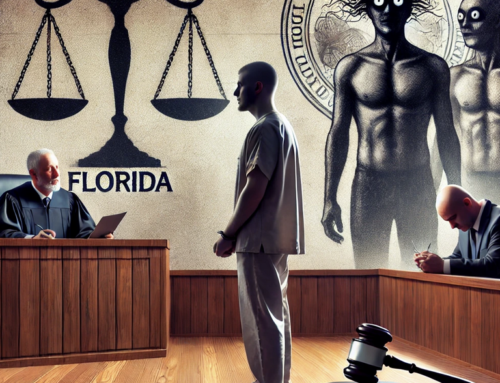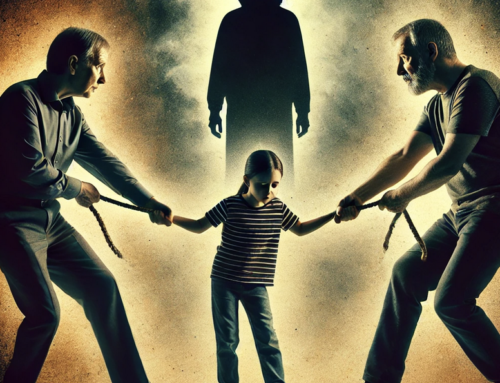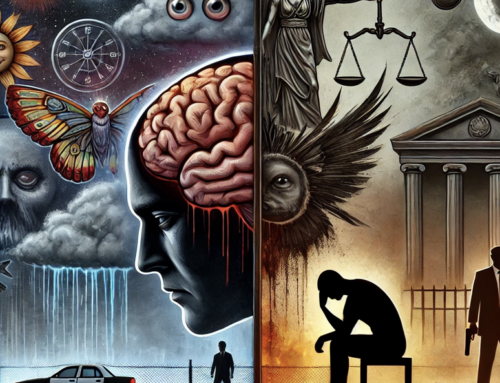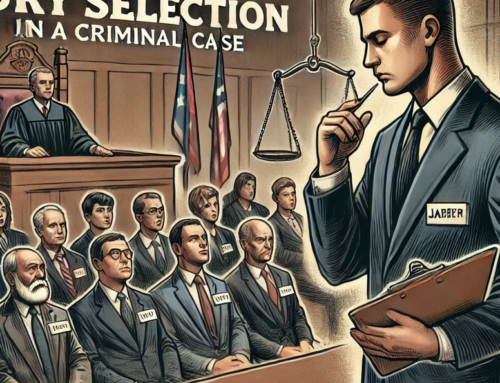Capgras Syndrome
Capgras syndrome is a delusional disorder, which results in those afflicted believing an impostor has replaced someone or something close to them. Capgras syndrome (CS) is one of four variations of delusional misidentification syndrome, a group of disorders in which the identity of someone or something close to the patient is believed to have changed. Capgras syndrome, the focus of this post, will be explored in greater detail in terms what it may be like to live with this condition and will mention any similar disorders as they relate to the discussion of the topic. The purpose of this is to explore the cognitive theories that have been devised to explain why delusional disorders such as Capgras develop, and how they are maintained, including: The Impostor and Brain Damage hypotheses, both one-stage models, along with different variations of the two-stage model, ending with the Interactionist model.
Delusional misidentification syndrome consists of a group of delusional disorders all involving dysfunctional affective responses to external stimuli. Researchers are able to measure covert, or unconscious, familiarity through skin conductance response (SCR) tests. These disorders are worth mentioning because they all involve dysfunction of similar cognitive modalities involved in face recognition and affective responses to stimuli. Gaining knowledge in one may help further the understanding of the others. Fregolis syndrome, for example, is a disorder in which the patient believes different people are actually the same person in disguise, and are unable to understand why nobody else will acknowledge this belief. This is partly to be due to heightened affective responses to faces that are actually not familiar to them, causing an affective connection to a stranger when there shouldn’t be one. This can be seen with a higher than normal SCR for any face, whether it has been seen before or not. Another delusion in this group of disorders is Cotards syndrome, in which the patient believes that they are dead, their body is rotting, or don’t even really exist. This is believed to partly be due to a general flattening affective response to all external stimuli. Prosopagnosia, a cognitive disorder in which the patient loses the ability to recognize faces, is also worth mentioning, as it is considered by some to be the mirror image of Capgras syndrome. While unconscious recognition is still functional in these patients, their overt recognition, or conscious recognition, is not.
Capgras syndrome, along with Fregolis and Cotards syndromes, is also a very specific type of a delusion, in which the patient believes that someone, or something, close to them has been replaced by an impostor, or defined as: the delusional negation of the identity of a familiar person. As time passes, the belief tends to spread to other friends or family members. It has been reported that these patients can be a significant danger to other people, especially those whom are believed to be impostors. There have been cases of homicide as a result of Capgras. For example, one patient suffering from the Capgras delusion believed his father was actually a robot, and decapitated him to find batteries or computer chips in his head.
CS is considered partly to be due to an abnormal affective response. It has been shown that there are no changes in autonomic responses, measured with SCR, in response to both familiar and unfamiliar faces. Rather than a lack of feeling, not experiencing the sense of familiarity or warmth that was expected, these patients instead experience a feeling of estrangement or unfamiliarity. Also, there have been reports for patients with CS in which the ability to read facial expressions of other people is impaired. Further, through a measurement of the exposure effect, which is the unconscious change in affect due to repeated exposure to a stimulus, no autonomic response is shown in Capgras patients.
Although CS is generally thought to involve the visual pathways, there have been cases in which blind patients developed this condition, believing the voice they hear of someone close to them was actually not their real voice, and is in fact an impostor. As far as recovery, there have been reported cases where treatment with antipsychotic medication was successful, but for the majority of patients, CS is highly resistant to pharmacological treatment.
Capgras is widely thought to be due to dysfunctional portions of the brain because the majority of patients with these delusions have other comorbid degenerative brain disorders or lesions in the brain due to surgery, stroke, or head trauma. CS may occur when the occipital pathway, or the auditory pathway in the case of blind patients, is left intact allowing recognition to occur, while the subcortical pathways of the limbic system are lesioned, blocking the usual emotional reaction of familiarity from occurring. Neurological damage to specific parts of the brain may trigger a feeling of strangeness towards the significant other.
There are documented cases in which the same areas of the brain of patients were damaged as those with CS, but never developed the delusions. These patients, known as Tranel’s patients, made analogous claims that they had a strange feeling as if someone close to them was an impostor, while never actually believing this to be true. Other documented cases of the development of CS due to a urinary tract infection or electrolyte imbalances also suggests that brain damage alone cannot be the only explanation, and there must be some sort of change or disruption in certain normal cognitive modalities, such as a belief acceptance abnormality. According to Pacherie, there are three different kinds of checking procedures that people use to decide whether a belief based on one’s observation should be accepted: by enlarging one’s own set of observations, by using background and general encyclopedia knowledge, or by relying on the testimony of others. Aside from the neurological damage, people who develop delusional disorders such as CS may also be lacking in this ability.
Delusions are generally unrealistic beliefs backed by an irrational argument, often highly resistant to treatment, and usually personally significant. These delusions usually begin as a strange sense that something has changed or feels wrong, and over many weeks begins to develop into something more concrete. Referred to as the delusional atmosphere, this is when there is a rearrangement of ideas or beliefs about something in particular. The cognitive processes that are involved from the time the patient begins to sense something leading to the point of a fully crystallized delusion are still unclear. Many theories have been conceived all with the same goal of explaining these processes. Depending on which of the theories discussed below, are given more weight, one may argue that the development of a delusional belief is solely due to brain damage, while another may argue that there may be certain preexisting cognitive processes that leave someone more susceptible to delusional thinking, such as the willingness to accept minimal evidence to confirm a hypothesis.
There are two main categories, which comprise of the majority of theoretical explanations for delusional disorders: endorsement models, or explanationist models. According to the endorsement approach, the delusion is composed of the phenomenological experience of the patient, through the sensory modalities alone. In other words, what is perceived is the delusion. The explanationist approach claims the delusion is constructed in order for the brain to explain an unusual experience. Both the endorsement and explanationist models are further split into one-route or two-route models, involving either a single or multiple cognitive impairments. One-route and two-route models both accept the fact that the patient experiences some abnormal or anomalous experience due to a neurological dysfunction, and all have the same goal of explaining this process.
Others choose to explain delusions with the use of biases or impairments previously already part of the patient’s personality before the delusion developed. To name a few, a bias in probabilistic reasoning, which is the tendency to jump to a conclusion without any reliable evidence, may contribute to delusional thinking. Observational and attributional biases are also suggested to play a role, leading the individual to explain their experience strictly with external causes instead of also considering internal reasons. Impairments in global consistency-checking procedures along with the inability to inhibit prepotent doxastic responses, which contributes to the inability to differentiate between what is reality and what is not, is also suggested. Although these biases may leave someone more susceptible to delusional thinking, the majority of psychologists do not see it as the only explanation; this would lead someone to develop delusional beliefs whenever an unusual experience occurs, which is often not the case. Many of the models, both one-route and two-route, discussed below incorporated the use of these biases into their explanations.
The Brain Damage Hypothesis, a one-route endorsement approach, gives a rather straightforward explanation: damage to certain aspects of the brain cause the patient to directly experience the delusion, while making the claim that they are perfectly sane or rational in other areas. The majority of researchers find this hard to accept, arguing it is highly unlikely that damage to a small amount of brain tissue alone can cause many people of all different ages and backgrounds to have the same exact intrinsic impostor experience. In 1974, Brendan Maher was one of the first to propose an explanationist one-route model for delusions, specifically referred to as the Impostor Hypothesis when in the context of the Capgras delusion. Like the Brain Damage Hypothesis, the Impostor Hypothesis claims that the only impairments in cognition involve the perceptual modalities. Therefore, the delusional experiences are not due to any abnormal cognitive processes, and instead are seen as a rational response to dysfunctional sensory experience. Those not in support of this hypothesis claim that nobody who is truly rational could ever accept the fact that an impostor has replaced someone they care about according to the principle of conservatism which most of us adhere to, which is the tendency to reject a belief (impostors exist) that is inconsistent with the majority of our preexistent beliefs. The majority of CS patients give less weight to alternative explanations provided by medical staff or family members than usual, seeing their experience as fact, pushing researchers to come up with other possible explanations.
In response to the inadequate one-route models originally proposed by Maher, different versions of the two-route model were developed; all generally agree that there is an anomalous perceptual experience at the first stage, and some sort of bias or deficit at the second stage. While one-route models emphasize the phenomenal experience of the individual, for the most part two-route models emphasize the cognitive disruption, while also acknowledging that the phenomenal experience plays a role. The best-known model is the two-route model of face recognition, which was originally proposed as a model for prosopagnosia in 1990 but then applied to Capgras syndrome; also used as the basis for other two-route models. This original model proposes that there are two pathways, a ventral visuo-semantic pathway responsible for overt recognition and the processing of facial features, and the dorsal visuo-affective pathway responsible for unconscious recognition and the appropriate emotional response to faces. This model left some unanswered questions, such as why the impostor delusion is maintained even when the patient is shown evidence from many credible sources claiming otherwise.
In 2000, Breen et al. proposed a different two-route model, suggesting there is actually only one face-recognition stage, but it is then split into two different pathways which are directly connected; one responsible for processing semantic and biographical information, and the other one controlling the emotional responses. In 2001, a modified version of the Breen et al. model was proposed by Ellis and Lewis suggesting the two pathways are not directly connected, but instead they both lead to a single modality or device where they are combined to form the conscious experience. This helps explain why, in the case of the Capgras patient, rather than the lack of a feeling, a feeling of unfamiliarity is produced; the device recognizes a mismatch in information it is receiving and so produces the appropriate response, an impostor experience.
Another model proposed was by Hirstein in 2005, based on a different model of face perception than the other two-route models; it is a neuro-anatomical as well as a cognitive model. Hirstein’s version is often referred to as a mind reading-theory, and can be applied to all of the delusional misidentification syndromes, including Capgras. Along with a core face-processing system and an extended processing system, the temporal lobe contains two face-processing streams; the medial pathway is responsible for processing the unique characteristics of a face that make up the identity, and the lateral pathway produces possible representations of the person in various emotional states, basically an internal representation of his or her mind at any given moment.
Up to this point, each of the models proposed, both one-route and two-route, are considered uni-directional, either going from the abnormal phenomenal experience, to the formation of the delusion, or starting with the cognitive deficit which then alters the perceptual experience. The Interactionist Model proposed by Young, is a two-route model based off the original model originally developed for prosopagnosia, but instead claims both bottom-up and top-down processes interact with each other. It highlights the importance of the phenomenal experience in maintaining the delusion, while claiming that it is not sufficient alone to explain how the delusion develops in the first place; this is a direct disagreement with one-route models claiming the phenomenal experience is directly responsible for both the formation of the delusion and it’s maintenance. As Young suggests, once a belief is formed, it will affect how we perceive all other information, as well as what information we choose to attend to; therefore this suggestion, any preexistent biases the individual may possess, along with the fact that the visual modality in humans tends to take precedence over other forms of information unless proven otherwise, may help explain why Capgras tends to get progressively worse over time. Every time the patient perceives the alleged impostor, it is seen as powerful evidence further confirming their seemingly irrational theory. According to Young, this is not only an explanation for the formation and maintenance of delusional beliefs, but should be used as the basis for understanding our perception as being an active process even in healthy individuals.
The purpose of this paper, with focus on Capgras syndrome and through the discussion of related cognitive disorders and explanation of theories, was to further highlight the importance of the cognitive processes involved in the construction of our reality, and how we choose to interact with our environment. Delusions often push people to behave in irrational and criminal ways. Our perception is reliant on many different modalities working together in sync, and as seen in those with Capgras and other related disorders, any seemingly small errors in cognitive processing will often have a large impact on how the world is perceived. Although the general knowledge base has come a far way, more research needs to be completed regarding which processes in the brain are responsible for the specific content of these delusions, as there isn’t much empirical evidence backing suggestions as to what those processes may be; in other words what about the experience of a flattened affective response leads someone to believe their body is dead or rotting like in those afflicted with Cotards syndrome? Also, does the insanity defense apply to an individual who is suffering from a delusional syndrome? Is it a mitigating factor in the case?
References
Delaffon, V., Vahabzadeh, A., Naik, S., Kinnair, D. & Bruce, J. (2010). Capgras Syndrome in a Patient with Severe Hyponatraemia. German Journal of Psychiatry, 13(4), 175-177.
Hirstein, W. (2010). Loved Ones Near and Far: Feinberg’s Personal Significance Theory. Neuropsychoanalysis, 12(2), 163-166.
MacDonald, A. (2008). A sneaking suspicion: The semantics of emotional beliefs and delusions. Behavioral and Brain Sciences, 31(6), 719-720.
Pacherie, E. (2008). Perception, emotions and delusions: Revisiting the Capgras Delusion. In T. Bayne & J. Fernandez (Eds.) Delusions and Self-Deception (pp 105-124). École normale supérieure, Paris: Psychology Press.
Reimer, M. (2009). Is the impostor hypothesis really so preposterous? Understanding the Capgras experience. Philosophical Psychology, 22(6), 669-686.
Talley, B. & Michels, L. (2009). Two Patients who Think their Family Members have been Replaced by ‘Imposters’. Psychiatric Annals, 39(5), 247-253
Young, G. (2007). Capgras delusion: An interactionist model. Consciousness and Cognition, 17(2008), 863-876.
Young, G. (2007). Restating the role of phenomenal experience in the formation and maintenance of the Capgras delusion. Phenomenology and Cognitive Science, 7(2008), 177-189.
Young, G. (2009). In what sense ‘familiar’? Examining experiential differences within pathologies of facial recognition. Consciousness and Cognition, 18(2009), 628-638.








